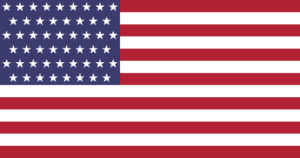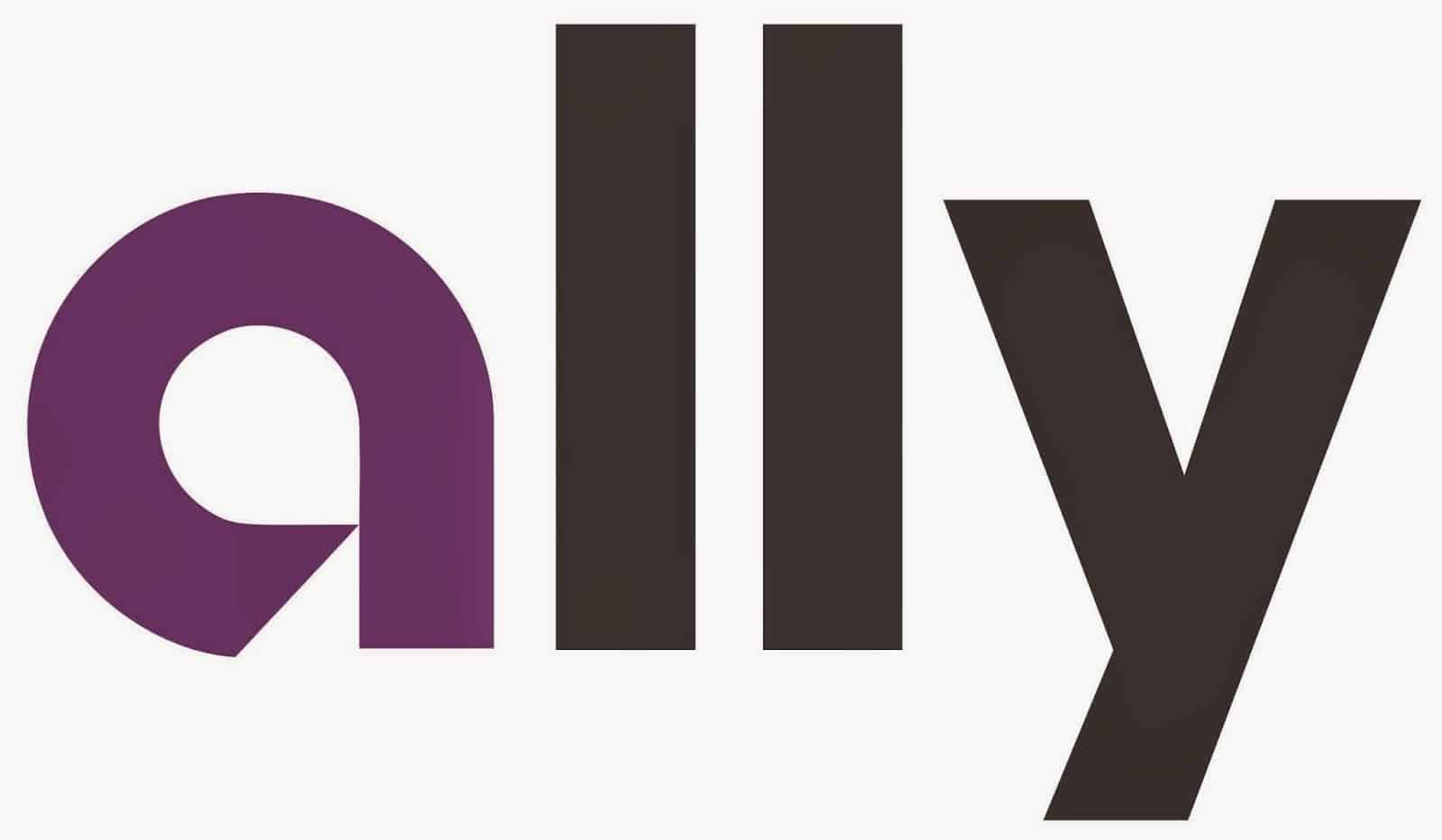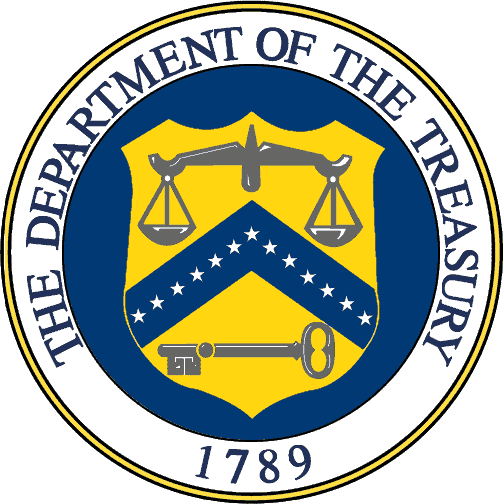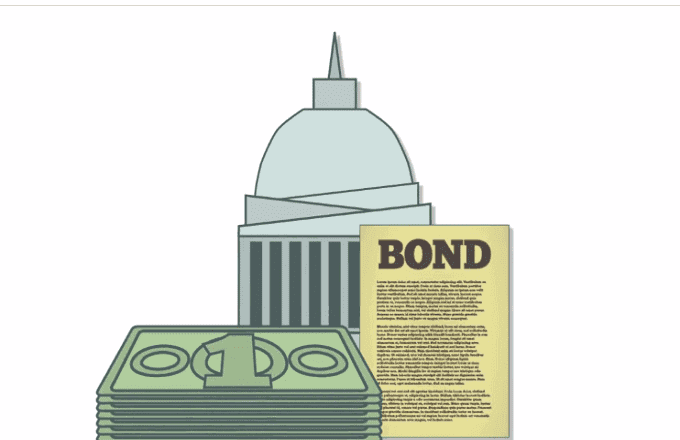Best Investment Bonds & Bond Rates 2021
Are you interested in investing in bonds, but not too sure how they work? Or maybe you’ve got a basic understanding of bonds, but want some more information on the best bonds to buy in 2021?
Whatever your reason, you should know that bonds come in a full range of shapes and sizes. Whether its corporate bonds, government bonds, fixed-rate bonds, savings bonds, or property bonds, there’s something to suit all risk levels.
As such, before you begin your bonds investment journey, be sure to read our comprehensive guide first. We’ll cover everything you need to know, from how bonds actually work, where you can buy them from, how much money you can make, and what risks you need to consider.
Featured Bonds Broker 2020

- Minimum deposit and investment just $5
- Access to Bonds, as well as Stocks and Funds
- Very user friendly platform

-
-
What is a Bond?
What better place is there to start than by explaining what a bond actually is? So, when you purchase bonds, you are effectively lending money to the company or government that issued them. Institutions issue bonds as a means to raise money, and thus, pay you interest in return for your investment.
This is usually paid once per year, however, some bonds pay interest every three months. Once the bonds expire, you will then receive your original investment in full.
The interest yield that you receive on your bonds can vary enormously. This will depend on a range of factors, such as the length of the bond agreement, and the level of risk associated with the issuer.
Let’s explore a quick example to ensure you have a basic understand of how a bond agreement works.
- You invest $5,000 into fixed-rate bonds
- The term of the bond is 3 years
- The yield on the bonds is 4%
- At the end of year 1, 2 and 3, you’ll be paid 4% in interest ($200 per year)
- Once the bonds expire (3 years) you will receive your original $5,000 back in full
- You would have made $600 in interest ($200 per year) over the 3 years
Although the above example is super basic, hopefully it gives you a better idea of how a bond agreement works.
What Different Types of Investment Bonds are There?
There is a vast range of bond types that people invest in, each with different characteristics. Below is a list of the main bonds that people invest in.
United States- Corporate Bonds: Bonds issued by large companies
- Government Bonds: Bonds issued by governments
- Property Bonds: Bonds backed by property, or to fund property developers
- Savings Bonds: Bonds issued by banks or building societies
- Bond ETFs: Trade bond prices on the open marketplace without owning the bonds
- Fixed-Rates Bonds: Bonds that pay a fixed amount of interest until they mature
- Bond Funds: This is when you allow an experienced fund manager to buy, sell, and trade bonds on your behalf
UK
- UK bonds – Fixed rate bonds over a one or two-year period
- Premium bonds – Bonds are entered into a government back monthly draw, winnings are tax-free
Why do People Invest in Bonds?
Much like in the case of any other asset class available in the investment sphere, people invest in bonds to make money. But what sets bonds apart from other investments? Check out the following factors that motivates investors to buy, sell, and trade bonds.
Earn Income StreamLow RiskDiversify PortfolioTax SavingsInterest Rate SpeculationIn the vast majority of cases, bonds will always pay a fixed rate of interest, at a fixed point in time, which is always determined before the investment is made. This means that if you hold on to your bonds until they expire, then you know exactly what you are going to make. This is perfect if you want to make a passive income.
Although some bonds are a lot riskier than others, some are virtually risk-free. For example, if you invest in U.S Treasuries, which are bonds issued by the U.S. government, the only way you could lost your money is if the government collapsed. In this sense, investors are accustomed to practically no risk.
If you’re the type of investor that likes to diversify your portfolio to minimize risk levels, then bonds can help you achieve this aim. In fact, there is often an inverse correlation between bonds and the stock market. This means that as the value of the stock market goes up, bond prices go down. Therefore, adding a range of bonds into your investment portfolio can allow you to diversify with ease.
Certain bonds, such as those issued by the U.S. government, are not attributable to tax. As such, holding a selection of government bonds is a great way to minimize your tax liabilities, and thus, earn interest without it affecting your annual threshold.
Although the vast majority of bonds are fixed-rate, this doesn’t mean that the bonds can’t be traded on the secondary markets. In fact, the trading of bonds between institutions is now a multi-trillion dollar sector. The price of the bond is determined by its interest rate. As the interest rate will fluctuate depending on demand and supply, some traders like to invest in bonds so that they can speculate on the future direction of interest rates.
Learn More: The Federal Reserve And Interest Rates
Note: If you’re looking to invest in non-government bonds, then its all but certain that you will need to go through an online broker. Therefore, it is crucial that you only choose a US or UK bond broker that is heavily regulated, easy-to-use, and has a competitive fee structure. Before you join a new broker, make sure that you check out our rating systemPros and Cons of Investing in Bonds
Before you buy bonds, be sure that you make some considerations regarding the pros and cons of making an investment.
Pros
- Earn passive income – no need to do anything until the bonds mature
- Choose how much risk you want to take
- Decide how long you want the bond agreement to last
- You can choose your risk levels and rate of return
- U.S. government bonds are virtually risk-free
- Some bond platforms allow you to get started from just $100
- Bonds sometimes have a secondary market
Cons
- Some bonds pay really low annual yields
- Some bond markets (such as foreign government bonds) can be difficult to access if you’re not an institutional investor
How To Invest in Bonds in the U.S.A.
When corporations issue new bonds, they specify a minimum amount that you can invest to access the offering. As the minimum is usually well into the millions of dollars, it’s likely that you won’t be able to buy bonds directly from the company that issued them. This is why you will need to use an online broker. The broker in question will purchase a significant number of bonds on behalf of their clients, and then sell them via their online platform
On the other hand, bonds sold by the U.S. government can now be purchased directly from the U.S. Treasury Office website. This means that there is no need to go through a third party, and thus, will not cost you any fees or commissions.
Note: We can’t stress how important it is to only use a reputable online broker. Always research the credentials of the broker, such as whether or not they hold any regulatory licences.How We Rank U.S. Online Bond Brokers
As the buying and selling of bonds is now hugely popular with online investors, there is now a considerable number of bond brokers. While competition is always a good thing, this can also make it difficult to know which one to choose. Check out our list below which outlines the main factors we look out for before recommending a bond broker.
- Fees and commissions
- User friendliness and customer support
- Research and analytics tools
- Number of bonds to invest in
- Trading platforms
- Offers and promotions
- Number of markets accessed by the trader
Top 5 U.S. Bond Brokers for 2021
1. StashApp
StashApp is a U.S. based platform that not only allows you to buy and sell bonds, but shares and funds, too. The platform makes is super easy to get started, not least because its mobile application is really user-friendly. Moreover, the StashApp platform allows you to make an investment from just $5. This is great if you are still new to bonds, and what to increase your knowledge before depositing larger amounts.
Investment process
The first thing that you need to do is download the StashApp application to your cell phone. Its free to download across both iOS and Android devices. You then need to register an account, which will include an identity verification process. As such, make sure that you have your social security number to hand.
Once you’ve verified your identity, you can then fund your account.
Next, head over to the bonds section of the StashApp platform, and choose which bonds you want to buy.
Fees and minimum deposit
One of the main selling points to StashApp is that you can deposit and invest just $5. However, take note, if your account balance is below $5,000, you’ll be charged a monthly fee of $1. If your account balance is surplus of $5,000, then you’ll pay 0.25% in annual fees.
Pros:
- Minimum deposit and investment just $5
- Great for newbies
- Access to bonds, as well as stocks and funds
- Very user-friendly platform
Cons:
- Windows and Blackberry devices not supported
3. Ally Invest
Backed by well-known U.S. institution Ally Bank, Ally Invest is an online stock broker that makes investing easy. One of the main selling points to the Ally Invest platform is that its fees are industry-leading. On top of giving users access to the multi-trillion dollar bonds market, you can also invest in stocks and shares, ETFs, options, and mutual funds. As a U.S. based broker, the platform is tailored to, and only to, U.S. residents.
Investment process
You’ll need to initially open an account with Ally Invest. In order to satisfy U.S. regulations, Ally Invest will ask you to verify your identity. In most cases, by providing your personal information alongside your social security number, Ally Invest can verify your identity within just a few minutes by using third-party sources.
Once your account is ready-to-go, then you can make a deposit using your debit/credit card.
In order to buy bonds, you simply need to go to the investment section of the platform, scroll through the range of bonds on offer, and then complete the trade. You’ll receive your interest payments directly into your Ally Invest account.
Fees and minimum deposit
Ally Invest does not impose any minimum deposit amounts, which is great.
The platform charges just $1 per bond trade, plus $0.65 per contract.
In terms of withdrawals, you’ll pay a flat fee of $30 to withdraw funds to a U.S. bank account.
Pros:
- U.S. based broker
- Heavily regulated
- Backed by well-known U.S. financial institution
- Easy to use
- No minimum deposit
- Low fees
Cons:
- No demo account
4. Fidelity Investments
Fidelity Investments is a company of significant size, with more than $2.4 trillion in assets under management. The company has since opened the doors to retail investors by launching its own mobile app. Although the fees charged by Fidelity Investments are higher than the other brokers on our list, you are essentially paying for an industry leader. As such, not only will you be trusting your funds with a heavily regulated and established U.S. institution, but you’ll also have access to a wider pool of bonds.
Investment process
The Fidelity Investments platform offers a vast range of bonds. This covers fixed-rate bonds, bond funds, and even U.S. Treasuries. Before you can get started, you’ll need to go through a somewhat cumbersome verification process. However, once you’ve passed the KYC process and funded your account, you can buy bonds straightaway.
Once you buy your chosen bonds, your interest payments will be deposited straight into your Fidelity Investments account, meaning that you can re-invest them once they arrive.
Fees and minimum deposit
Fidelity Investments charges a fee of $1 per bond investment. If you decide to open the Fidelity Go account, there are no minimum deposits.
If you require advisory services, this is charged at 0.35%.
Pros:
- One of the largest institutions in the U.S.
- Long and established reputation
- No minimum account balance
Cons:
- Account opening process takes longer than other brokers
5. Robinhood
Although Robinhood was only launched in 2013, the platform has quickly become one of the most well-known brokers in the U.S. The key reason for this is that the platform allows you to trade certain assets fee-free. While the platform does not sell bonds directly, they do allow you to invest in bond ETFs. On the one hand, this gives you access to hundreds of bonds at the click of a button, without paying any fees. On the other hand, you are speculating on the value of the bond going up or down, and thus, you likely won’t receive interest.
Investment process
As with all bond brokers, you’ll need to first open an account and verify your identity. This is a quick and seamless process with Robinhood that rarely takes more than 10 minutes. Once you’re set-up and have deposited funds, you can head over the ETF section.
Browse the various bond ETFs on offer, think about whether you believe the value of the bond will rise or fall, and complete your trade. You can exit you trade whenever you want.
Fees and minimum deposit
As Robinhood has made its name from its fee-free trading offering, you won’t pay any fees to trade bond ETFs.
The platform has a minimum deposit amount of $200. Even better, when withdrawing funds to your U.S. bank account, there are no fees.
Pros:
- Remarkable fee-free bond ETF trading
- Very user-friendly platform
- Get started with just $200
- No withdrawal fees
Cons:
- Only bond ETFs available, so no access to fixed-rate income
Top 5 U.S. Bonds 2021
Although there are literally thousands of bonds to choose from, we’ve decided to list five of the best for 2021 and beyond. Each bond will have its own risk attached to it, which should be reflected in the annual yield on offer. If you do like the sounds of one of the five bonds listed below, make sure that you perform your own research prior to making an investment.
1. U.S. Treasury Bonds (T-Bills) – 5 Years – 1.89%
If you’re looking for an ultra-safe bond investment, whereby the security of your funds is your top priority, then you’re probably best off sticking with U.S. Treasury bonds. These are bonds issued by the U.S. government, meaning that the only way you could lose your money is if the government collapsed.
As a result, the interest rates on offer are super low. However, the rates on offer are still higher than what you would earn in a bank account. You can by U.S. government bonds from a period of just 3 months, all the way up to 20 years-plus. For a 5 year term, you’ll get in the region of 1.89%.
2. GameStop – Bond Maturity Date 2021 – 6.75%
If you’ve got a slightly higher appetite for risk, then you might want to check out the bonds issued by GameStop. For those unaware, the U.S. based company is a major retailer for all things video games. The company is also listed on the New York Stock Exchange, and is responsible for over 22,000 full-time employees. Although these bonds pay a whopping 6.75% per year, this is reflected in the risk levels.
3. HCA Healthcare – Bond Maturity Date 2021 – 6.25%
Launched way back in 1968, HCA Healthcare is a private healthcare provider that operates throughout the U.S. The company is behind more than 185 hospitals and 119 surgeries, and as of 2018, employees more than 249,000 staff. Listed on the New York Stock Exchange, HCA Healthcare has a market capitalization of almost $43 billion. In terms of its bonds, you can grab yourself an annual coupon rate of 6.25%, with the bonds expiring in 2021.
4. Western Union – Bond Maturity Date 2023 – 4.25%
Western Union is the de-factor money transfer service provider, with locations scattered globally. Although its business model has been questioned in recent years – not least because alternative, more cost-effective money transfer options are in existence, the company has since diversified into other others outside of its primarily in-person service.
However, Western Union still has a somewhat strong presence in the emerging world, especially in places where access to everyday banking is not an option. If you like the sounds of buying bonds issued by Western Union, you can get yourself a 4.25% annual yield, with the bonds maturing in 2023.
5. American Airlines Group – Bond Maturity Date 2026 – 4.625%
If you’re only looking to hold onto your bond investment short-term, then you can purchase American Airlines Group bonds that expire in March 2021. The bonds – which were originally issued in 2005, pay an annual interest rate of 4.6250%. This represents excellent value considering the short time period.
How Does a Bond Investment Work?
If you are attempting to learn how bonds actually work, then its important that you have an understanding of "Risk vs Reward". In a nutshell, the higher the risk of the company or government that issues the bonds, the higher your returns should be.
In order to figure out whether a bond investment is good value or not, you should also have a firm understanding of two key terms - maturity and yield.
MaturityYieldWhen we talk about the maturity of a bond, this refers the date that the bonds will expire. So, when a company or government issues new bonds, they will always have a maturity date. Up until this point in time, the bond holder (investor) will be paid fixed interest payments. When the bonds do mature, the bond holder is paid their original investment back in full.
The reason that the maturity date is important is because it has a direct correlation to risk. In other words, the further away the maturity date, the more chance there is that the issuer will default.
Think of it like this: If you lent your friend $1,000 with a payback period of 1 month, and another friend $1,000 with a payback period of 10 years, which loan do you think is more risky?
In its most basic form, the yield is a term used to describe the amount of interest you will be paid for holding a bond. The interest is always expressed as an annual figure, even if the interest is paid on a monthly or quarterly basis.
The interest yield on bonds is expressed as a percentage, meaning that you can easily calculate how much your investment will be worth when the bonds mature.
As noted earlier, the higher the risk of the bond, the higher the yield will be. This is also the case for the length of the bond, insofar that the longer the bond has before it matures, the higher the yield.
Who Issues Bonds?
In terms of who issues bonds, this will either be by a company, or a government. Known as corporate bonds, companies issue bonds as a way to raise funds for a particular project or investment. They often choose this option instead of issuing more shares as it allows the company to retain its equity. Governments, on the other hand, will issue bonds as a way to pay for front-line public services, such as law enforcement or the military.
Trying to understand the difference between the two is often confusing, so we've explained each type in more detail below.
Government bondsCorporate bondsVirtually every government around the world issues bonds as a way to fund public services. This is usually the case because annual tax revenues were not quite large enough to meet the national budget. In the U.S., government bonds are referred to as Treasury Bonds, or simply T-Bills.
They work in exactly the same way as corporate bonds, insofar that the government will pay you a fixed amount of interest until the bonds expire. Government bonds are also traded on the secondary market, whereby the value of the bonds can go up or down.
In terms of the risk levels, the only way that your funds are at risk is if the government defaults on payment. Now, in the case of the U.S., its all-but impossible for the U.S. government to default on its bonds payments. If the government experiences a short-fall in cash reserves, they can simply print more money, as the U.S. dollar is the reserve currency of the world.
On the other hand, bonds issued by emerging countries are a lot more risky. As you'll see from the 10 year bond yields listed below, there is a large disparity in annual interest payments depending on the government issuing the bonds.
- UK: 1.14%
- USA: 2.47%
- CANADA: 1.73%
- AUSTRALIA: 1.74%
- GREECE: 3.52%
- BRAZIL: 8.79%
- INDIA: 7.41%
- Norway: 1.02%
source: Aksjebloggen.com
Outside of government bonds, you can also invest in corporate bonds. As noted above, these are issued by companies of all shapes and sizes. They work in exactly the same way as government bonds, however, they are often regarded as higher risk. The main reason for this is that if the company runs into financial trouble, they don't have the option of printing more cash.
Just like government bonds, there can be a huge disparity in the annual yields on offer, which is directly linked to the underlying risks. Check out some of the examples we've listed below.
- Anglo American Capital: 4.125% (expires September 2022)
- HSBC Bank: 5.375% (expires November 2030)
- Marks and Spencer: 4.75% (expires June 2025)
- Severn Trent: 6.125% (expires February 2024)
Bottom Line
In conclusion, investing in bonds is an excellent way to earn regular interest payments without needing to worry about actively trading. If you're prepared to hold on to the bonds until they mature, then you will receive annual or quarterly interest payments at a pre-defined, fixed rate. This is really useful if you are the type of investor that likes to know exactly how much they are going to make, rather than leaving it to market forces.
As we have discussed throughout our guide, although bonds are often referred as one of the lowest-risk assets in the investment space, some bonds are a lot riskier than others. At the lower end of the spectrum, government bonds issued by the likes of the U.S. are virtually risk-free. However, if buying bonds from a corporation that isn't performing too well, then the risks are a lot higher.
This is why it's crucial to assess the underlying "Risk vs Reward" model. Ultimately, if a particular bond appears to have more risk attached to it, then you should be rewarded with a higher interest yield.
Featured Bonds Broker 2020
- Minimum deposit and investment just $5
- Access to Bonds, as well as Stocks and Funds
- Very user friendly platform
Glossary of Bonds Terms
BondA bond is when companies or goverments need to generate funds and when you invest you will receive you lump sump back with interest at the end of your agreement.
Treasury BondBonds issued by the United States Department of the Treasury to finance government spending.
Treasury NoteA Treasury Note are bonds issued by the United States Department of the Treasury and last up to 10 years.
Treasury SecurityTreasury securities are the bonds issued to investors by the U.S. government
Municipal BondsA Municipal Bond is usually issued by local Governments to finance public projects such as roads, schools, and airports. You will recieve you lump sum and interest back at the end of the term.
Corporate BondsA Corporate Bond is issued by businesses to raise funds for expansions or projects. You will recieve you lump sum and interest back at the end of the term.
Premium BondsA Bond that has no interest rate but your investments are entered into prize draws to win £25 to £1mil.
Savings BondUsually offered by Banks and Building Societies, Saving Bonds will last for a fixed term and earn interest. You are not able to access the money during the fixed term.
Fixed Rate BondsA Fixed Bond will start and end with same Interest Rate.
FAQs
💸 How do bonds works?
When corporations or governments need to raise cash, they issue bonds. If you buy a bond, you are a bond holder. By being a bond holder, you are entitled to be paid regular interest until the bonds mature. When they do, you'll receive your original investment back in full.
💸 Is my money tied up when I buy bonds?
In order to receive fixed-rate interest payments, and then your initial investment back in full, you need to hold onto the bonds until they mature. However, some bonds - especially those issued by the U.S. government, can be freely traded on the open market. As bond prices can fluctuate, you might get less than what you paid if you attempt to sell them early. For bonds to go down in value, this would indicate that the marketplace believes there is more risk attached to them compared to when the bonds were originally issued. On the other hand, if the bond issuer is in a clean-bill of financial health, then its likely the value of the bond will sell at a premium.
💸 Are corporate bonds and government bonds the same?
Government bonds and corporate bonds operate in exactly the same way. As the name suggests, the only difference is that one is issued by a government, and the other is issued by a corporation (company).
💸 How do Bond ETFs work?
ETF stands for exchange traded fund. An ETF is a financial asset that tracks a particular market. This could be anything from Gold, real estate, and of course - bonds. As such, a bond ETF will track the market prices of a particular bond, or group or bonds. It is important to note that bond ETFs were designed in such a manner that investors can speculate on whether the value of the bond will increase or decrease. As such, you will not be able to earn fixed-income dividends, not least because bond ETFs never expire.
💸 How risky are bonds?
In a nutshell, there isn't an investment in existence that can ever be classed as 100% risk-free, as anything is possible. While it is true that financial analysts often describe bonds as low-risk, this isn't true for all bonds. For example, government bonds issued by leading economies such as the U.S., Japan, Germany or the UK are virtually risk-free, as its all-but certain that the government will not default.
However, bonds issued by nations such as Venezuela, Belize, Moldova, and other emerging nations, are typically very high-risk. As you'll see from the image below, even the likes of Greece has previously defaulted on its bond payments. The E.U. nation, which uses the Euro as its primary currency, defaulted to the tune of 1.6 billion Euros! When it comes to bonds issued by corporations, these also come with their own risks. One only needs to look at the collapse of the Lehman Brothers in 2008 to recognise that even the largest companies in the world can default on their bond obligations. Ultimately, your best bet is to diversify across multiple bonds.
💸 Can all governments print money to meet their bond debts?
This depends. For example, the U.S. has full control over the dollar, and thus, it can print more money as and when it sees fit. However, the major economies of Germany, Italy and France all use the Euro, and thus, they are bound by the authority of the European Central Bank. In the case of emerging countries such as Venezuela, although the government can print more money, its domestic currency is virtually worthless in the open marketplace, meaning that bond holders would still lose out.
See Our Full Range Of Bonds Resources - Bonds A-Z
Kane Pepi
View all posts by Kane PepiKane holds academic qualifications in the finance and financial investigation fields. With a passion for all-things finance, he currently writes for a number of online publications.
WARNING: The content on this site should not be considered investment advice. Investing is speculative. When investing your capital is at risk. This site is not intended for use in jurisdictions in which the trading or investments described are prohibited and should only be used by such persons and in such ways as are legally permitted. Your investment may not qualify for investor protection in your country or state of residence, so please conduct your own due diligence. Contracts for Difference (“CFDs”) are leveraged products and carry a significant risk of loss to your capital. Please ensure you fully understand the risks and seek independent advice. This website is free for you to use but we may receive commission from the companies we feature on this site.
Copyright © 2026 | Learnbonds.com
We use cookies to ensure that we give you the best experience on our website. If you continue to use this site we will assume that you are happy with it.Scroll Up
























